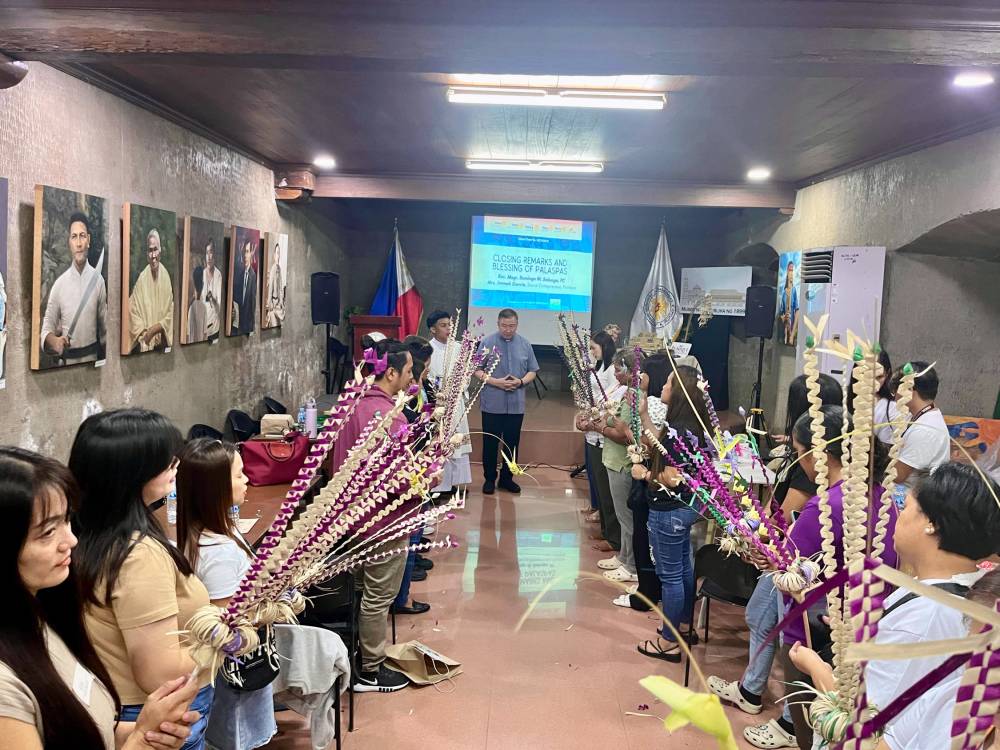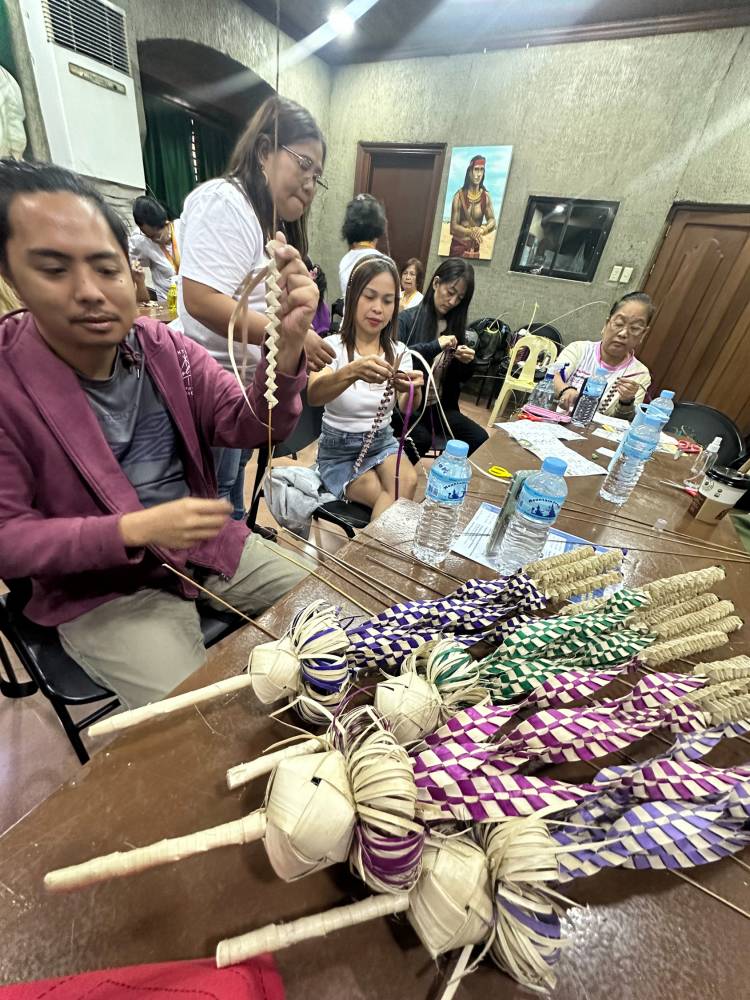Town puts art and extra effort into the ‘palaspas’

CITY OF MALOLOS—The “palaspas” (palm fronds) made in this city are sure to last decades after this Palm Sunday as they have been designed and crafted by trained “puni” weavers, whose skills are renowned in the international market.
Two recent workshops in Malolos, themed “Weaving a Better Future: Puni Livelihood Program for the Women of Malolos,” produced 40 new weavers to keep the craft alive. The first workshop was held on March 28 at Casa Real audiovisual room and the second on April 5 at the Barasoain Church Museo ng Republica audiovisual room.
“Puni offers timeless woven art palaspas which can last for decades. Other than keeping them on our doors and windows, we can use them as altar decor as well,” Jonnah Lacanilao-Garcia, owner of Punique, told the Inquirer last week.
It’s that durable
Apart from the woven designs, the palaspas from here are made out of buri (Corypha utan), a type of palm tree native to the Philippines. Unlike the ordinary palm leaves, buri leaves do not become brittle for months, even for several years, Garcia said.
Garcia said Punique conducted the training in answer to the need for more weavers and artisans to expand both their local and international markets.
The new weavers crafted three to five palaspas for their own families and friends, with some of them ending up selling several of their creations in time for Palm Sunday.
Punique, a company based in this capital city and in Bulakan town, reinvented puni, the centuries-old craft of woven leaves which are distinct and unique to the different regions in the country. It was established by Garcia, a business enterprise graduate.
Multiple uses
Punique developed puni into fashion accessories and home decoration, both for local markets and abroad. Puni was used to produce woven kitchen bowls, other food containers, toy balls, fish- and star-shaped toys, flowers, etc. Now the company uses this unique leaf weaving to make elegant leis, clothes and accessories, wedding bouquets and ornaments.
Sharon Mae Castro, 41 and a resident of Barangay Mojon in this city, volunteered to undergo puni weaving training in the April 5 workshop to learn the craft, aiming to later share her knowledge with her children, particularly her daughter, for her handicraft activities in school.

“Puni is a very notable and unique art similar to the origami of Japan, but is not taught in schools. I want to learn more and many designs of puni,” Mojon told the Inquirer.
Avelina Ligaya, 53, a widow from Barangay Bulihan, was one of the trainees in the March 28 workshop.
Added source of income
Ligaya told Inquirer she attended the training as she wanted to also explore the craft as a source of livelihood.
“This entails perseverance, but the craft is really beautiful and fascinating and I enjoy it. As a ‘longanisa’ supplier in my community, I also plan to explore puni as an additional source of income for my family,” she said.
Angelo Abcede, 39, the first male puni workshop participant, targets to sell 10 pieces ahead of the Palm Sunday Masses. His own specially designed palaspas cost P50 to P150 each.
A former fine arts student, he expressed a liking for puni weaving because for him, it is part of the rich history of the Philippines.
A lovely puni bouquet Garcia’s mother-in-law made for her wedding enticed her to take puni art to the next level.
The late Philippine culinary historian Milagros “Tita Mila” Enriquez from Bulakan town had a hand in the resurrection of puni in the province.
In 1998, Enriquez, with the support of Garcia’s mother-in-law, showcased to the world the puni designs alongside her culinary exhibit at the Smithsonian Folklife Festival in Washington D.C.
Nicanora Teresa “Rheeza” Santiago Hernandez, Enriquez’s sous chef also demonstrated her interest in puni. She considered Garcia as her puni mentor.
Before Hernandez died in 2022, she had promoted Bulacan’s puni in different parts of the country, as both ornaments for her culinary exhibits and as a separate puni exhibit.
Marichelle Cruz from Bulakan town and Bing Tubid from Malolos, are also keeping puni alive, both for local and international markets.
Garcia said many of Punique’s products, particularly rose and other flower earrings, are being exported to Canada, Hong Kong and Dubai.
She said she wants to develop more designs in the future like lamps, mirrors, tableware and other decorations.





















